tags: London England, London's Regents Park, sciblog, performing arts, travel
The next morning, it was cool and cloudy -- a nice break from the heat and humidity of the previous few days. So my friend and colleague, Bob O'Hara and I enjoyed a leisurely stroll through London's Regents Park on our way to the London Zoo.
We spent the early morning hours at a McDonald's near the hostel where we were staying, drinking coffee and using their free wifi to check email and publish essays on our blogs. But eventually, our laptop batteries ran out of power, so we packed everything up and caught the train to Regents Park.
This water fountain is filled with flowers instead of water.
London's Regents Park.
Once we were in Regents Park, Bob and I walked along the Broadwalk and I snapped a few photographs along the way. Unfortunately, I don't know the names of any of the structures that I photographed, although I suppose they all do have names and were constructed for particular reasons.
This is a look down The Broadwalk;
Regent's Park, formerly known as Marylebone Park, is one of the Royal Parks of London. This park has been held by the Crown for centuries, and the Royalty used it for hunting game. This park was first opened to the public in 1845 for two days each week.
As we walked, I was surprised to see that the park was filled with those most disgusting pests, Eastern Gray Squirrels, Sciurus carolinensis -- imports from the Eastern seaboard of the United States. I thought that fauna was moved only one way across the Atlantic Ocean -- from the UK to the USA, but obviously this was not the case. In this situation, the aggressive and adaptable American imports have successfully displaced the native Eurasian Red Squirrels, Sciurus vulgaris exalbidus, and, according to all accounts I have read, will likely drive them to extinction in just ten more years.
Eastern Gray Squirrel, Sciurus carolinensis.
London's Regents Park.
I did a little birding while walking through the park, and also managed to photograph a few species. Black-headed Gulls, Chroicocephalus ridibundus, are often seen walking around the lawns, feeding opportunistically on worms and other invertebrates that they come across. This species is a small bird as gulls go, and they take only two years to reach sexual maturity. Even though its (incorrect) nickname, "seagull," would have you believe they live on the high seas, this species is not pelagic, preferring instead to live in marshes and along rivers, and to nest on islands in lakes. The bird that you see below lacks the dark brown hood seen in breeding adults because it is in basic ("winter") plumage.
Black-headed Gull, Chroicocephalus ridibundus, basic plumage.
London's Regents Park.
I also spent a fair amount of time watching and photographing a family of European Magpies, Pica pica, which are close relatives to our own Black-billed Magpies, Pica hudsonia. These stunning birds have distinct black and white markings and long tails, however, close up, you realize that the "black" areas are actually iridescent patches, ranging from a glossy black to purple, blue or green, depending upon the angle of the reflected light. These are truly fascinating non-migratory birds that hold their territory as a family group. They engage in many complex social interactions that can keep a person fascinated and amused for hours.
European Magpie, Pica pica.
London's Regents Park.
One behavior that magpies are famous for is their gatherings, known as "parliaments," where they presumably resolve territorial conflicts as a group. This habit gave rise to several popular children's verses, like this one;
One for sorrow, two for joy;
Three for a girl, four for a boy;
Five for silver, six for gold;
Seven for a secret, never to be told;
Eight for a wish, nine for a kiss;
Ten for a bird that's best to miss.
After I ripped myself away from magpie watching, Bob and I continued along The Broadwalk until we ran across this little gem (below); The Cow and Coffee Bean. This espresso and sweets shop, in an almost fairy tale-like house, serves real farm-made ice cream and old-fashioned milkshakes along with a variety of teas and organic coffee. Sadly, they didn't sell any more substantial foods, although I was so tempted by fresh home-made ice cream and milkshakes that I could barely move on.
The Cow and Coffee Bean, a small espresso and sweets shop.
London's Regents Park.
We stopped for lunch when we found The Honest Sausage, a restaurant that serves organic foods made with the eggs of free-range chickens, and sausage and ham made from free-range pigs. Yum! While we ate lunch, I saw a variety of bird species outside the window; the European Robin, Erithacus rubecula; European starlings, Sturnus vulgaris; Eurasian Blue Tits, Cyanistes caeruleus; Wood Pigeons, Columba palumbus; Rock Pigeons, Columba livia; and House (English) Sparrows, Passer domesticus.
After lunch, Bob and I continued along The Broadwalk to the zoo. Along the way, I photographed this structure, which I think was originally intended to provide water to carriage or hunting horses, but I am interested to earn more about the original purpose for this water fountain if any of you know;
The stone work was lovely at one time, but acid rain had dissolved most of the stone, leaving only a ghost of its former glory;
Tomorrow, I will show you some images from the London Zoo .. I have several hundred, so I imagine that I will show you the zoo photoessay in two parts instead of one.
- Log in to post comments

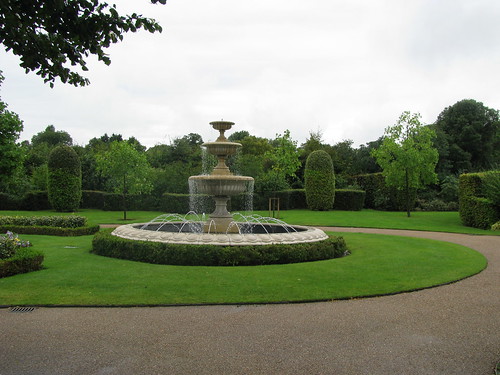
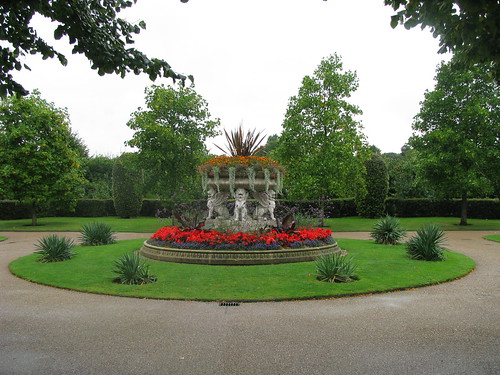
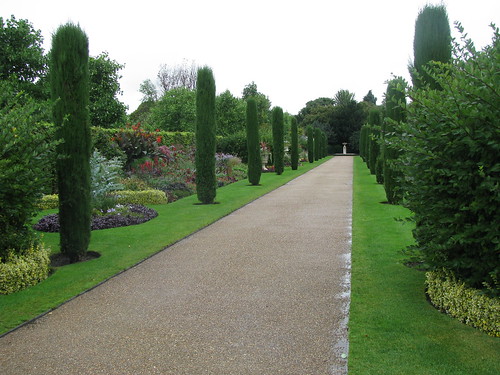

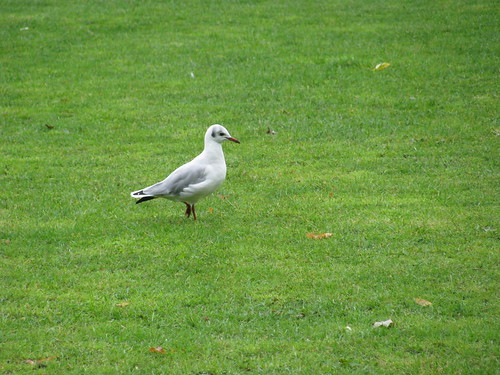
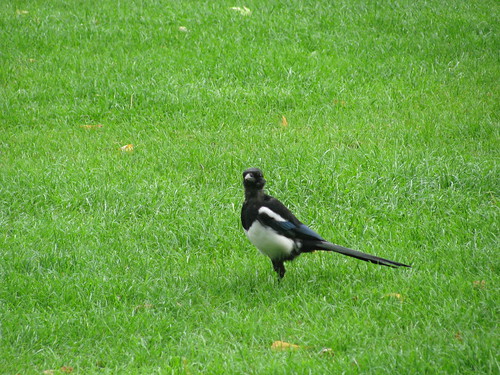
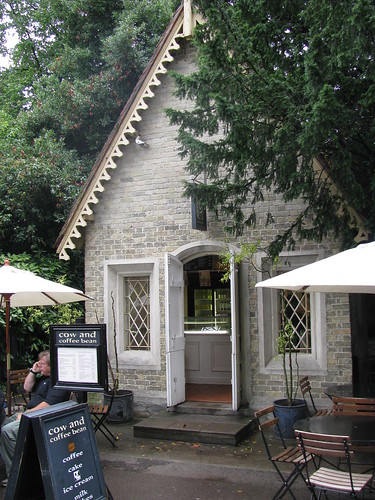
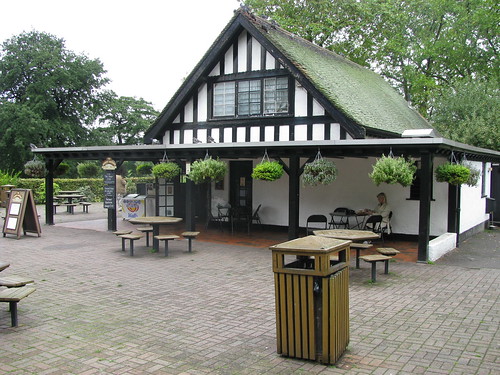
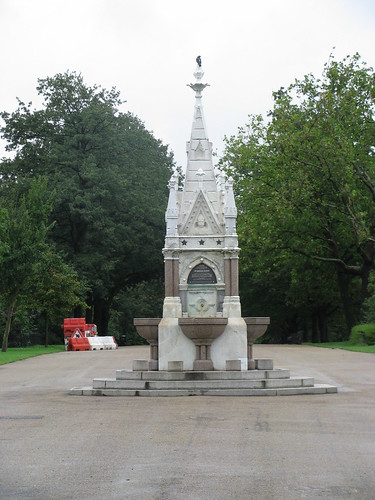

Brings back some fond memories of home, thank you. Now living in Bangkok your photos remind me of my daily bike ride from Camden to my work at Great Titchfield Street.
Nothing like that at all in my adopted city.
We're fighting back against the squirrels (and even eating them).
Some "local trivia" you may or may not enjoy, regarding the Magpies.
I was brought up with the folky custom that upon seeing one magpie only, you should salute it, to ward off the sorrow it signifies. Although I'm a very sceptical/rational type of chap, I still always salute solo magpies to this day.
However this is not universal in England, I've met other people who'd never heard of the custom. Wikipedia lists various other responses like saying "I defy thee" seven times, which in turn, I'd never previously heard of.
http://en.wikipedia.org/wiki/European_Magpie
Also, there's a rather sweet logic to "one for sorrow, two for joy" bit - it supposedly stems from the fact they are monogomous and mate for life, so if you ever see one on its own, that's because its partner has died. Although spoilsport Wikipedia contradicts this by saying if a partner dies, the survivor will find a new mate.
beautiful-I love the flowers in the fountain idea.